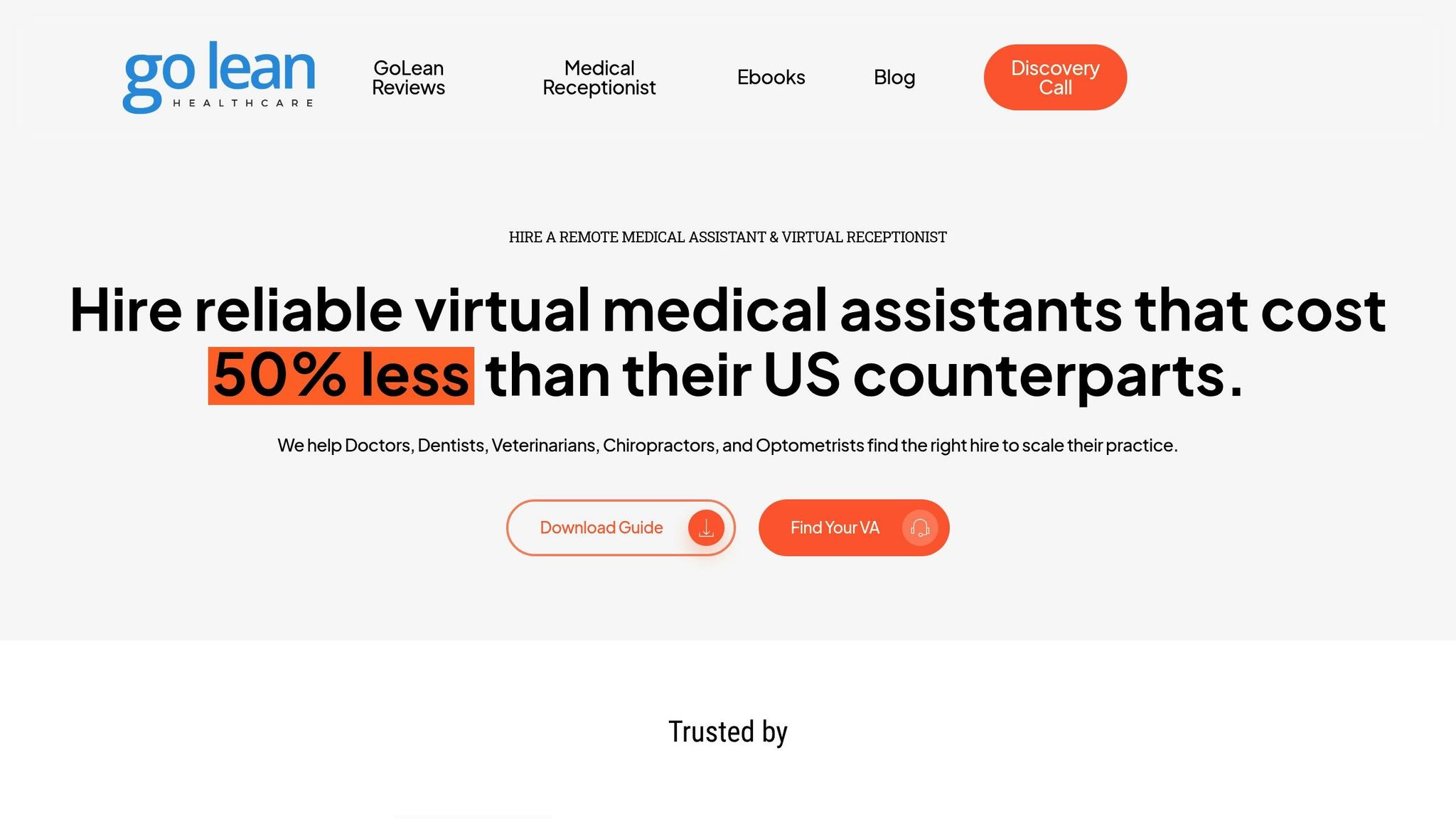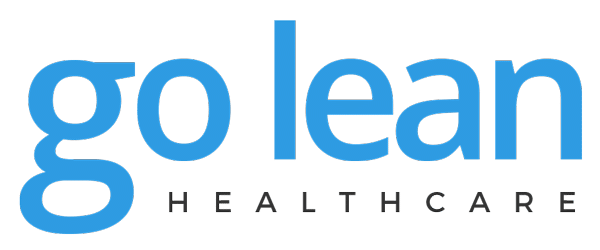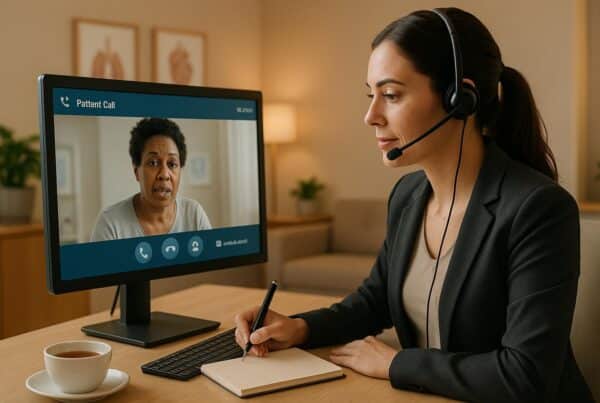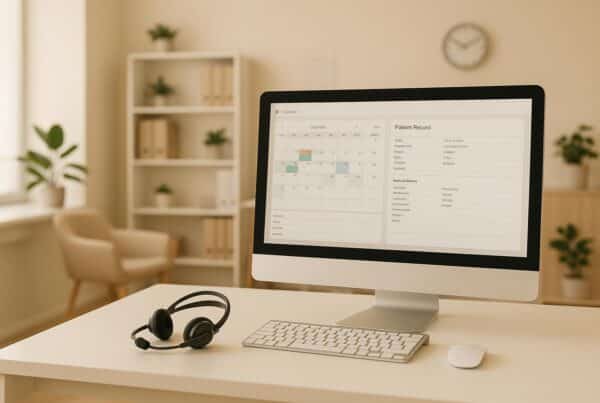Healthcare providers face rising costs and labor shortages, making real-time staff analytics a key solution to improve operations and patient care. These tools offer immediate insights into staffing, resource allocation, and compliance, helping organizations reduce costs, optimize workflows, and improve outcomes.
Key Takeaways:
- Real-time analytics helps predict patient admissions, balance staffing, and reduce burnout.
- Tools like GoLean provide HIPAA-compliant remote staff with real-time performance tracking.
- Features to prioritize: system integration, data security, and AI-driven insights.
- Successful implementation requires clear goals, staff training, and scalable tools.
Quick Benefits:
- Hospitals like Cleveland Clinic saved $150M using analytics.
- Predictive models reduced hospital readmissions by 22%.
- Real-time tracking improved patient safety and staff efficiency.
Real-time analytics is transforming healthcare by addressing staffing challenges and enhancing decision-making for better financial and patient outcomes.
Access Real-Time Workforce Analytics with Inovalon’s Workforce Intelligence Software
What to Look for in Real-Time Analytics Tools
Choosing the right real-time analytics tool can make a big difference in how efficiently your healthcare practice operates while staying compliant with regulations. In a field like healthcare, where patient data exists across multiple systems, it’s crucial to pick tools that bring data together, keep it secure, and provide insights you can act on. Here are some key features to focus on: system integration, HIPAA compliance, and AI-powered insights.
Healthcare System Integration
For healthcare providers, seamless integration with existing systems is a must. Patient data is often scattered across platforms like EMRs and practice management systems. The right tool should break down these data silos, automate data entry, minimize errors, and make processes like scheduling more efficient.
HIPAA Compliance and Data Security
Protecting patient information under HIPAA is non-negotiable. Over 176 million U.S. patients have been impacted by breaches of protected health information (PHI). Interestingly, many of these breaches stem from internal oversights rather than outside attacks. This underscores the need for analytics tools with robust security features like encryption, access controls, and automated safeguards.
Ignoring HIPAA requirements can be costly. Fines start at $100 per violation (capped at $25,000 annually for repeated issues), but they can escalate to $250,000 or more for severe infractions, with the possibility of imprisonment. Look for platforms that support regular risk assessments and provide detailed audit trails to help your practice stay compliant.
AI-Powered Insights and Predictive Analytics
Healthcare organizations need more than just raw data – they need insights they can act on. Real-time data streaming enables predictive analytics, which can help address staffing shortages, improve patient outcomes, and reduce avoidable hospital admissions. Some advanced platforms even leverage generative AI models to enhance datasets, offering faster predictions like urgent-care diagnoses and enabling quicker, more informed decisions.
GoLean: Real-Time Analytics for Remote Staff Performance

GoLean goes beyond just offering system integration and data security. It brings a unique edge to managing remote teams with its real-time analytics, helping healthcare administrators fine-tune operations and improve efficiency.
GoLean’s Services for Healthcare Practices
GoLean specializes in providing remote medical assistants and virtual receptionists who are fully trained in HIPAA compliance and EMR systems. These professionals are equipped to handle the specific needs of healthcare practices such as those of doctors, dentists, veterinarians, chiropractors, and optometrists. Their responsibilities include critical tasks like medical administrative support, virtual reception, insurance verification, medical billing, and even Spanish translation services.
Every assistant is rigorously trained in HIPAA regulations and EMR platforms, ensuring they meet the highest standards of healthcare compliance. GoLean sources its talent from around the globe but maintains strict requirements for healthcare knowledge and adherence to regulatory standards.
For practices serving diverse communities, bilingual staff options are available, making patient communication seamless. Additionally, the hiring process is designed to be quick and efficient, reducing delays. To back its commitment to quality, GoLean offers a 30-day money-back guarantee, giving healthcare providers peace of mind.
Real-Time Staff Performance Monitoring with GoLean
One of GoLean’s standout features is its ability to provide healthcare administrators with real-time insights into staff performance. Through its monitoring tools, administrators can track productivity, efficiency, and compliance as they happen. This ensures that any skill gaps or knowledge deficiencies are quickly identified, allowing for timely corrective actions to maintain high performance levels.
The analytics dashboard makes it easy to understand key performance indicators with clear visualizations. Managers can access both instant feedback and a broader view of employee performance over time. The system tracks healthcare-specific metrics, from the quality of patient interactions to the completion rates of administrative tasks. Considering that only 11% of organizations currently generate workforce data in real time, GoLean’s capabilities give healthcare practices a decisive edge in managing remote staff effectively.
These advanced monitoring tools are paired with flexible pricing options, making it easier for practices to align staffing solutions with their operational goals.
Pricing and Customization Options
GoLean offers a Basic Plan starting at $8.50 per hour, which includes HIPAA-trained medical assistants skilled in EMR systems, administrative tasks, and bilingual support when needed.
For practices requiring dedicated Spanish-speaking staff, the Bilingual Plan provides tailored pricing. It includes all the features of the Basic Plan, along with specialized Spanish translation services. Additionally, GoLean operates under a Business Associate Agreement (BAA) to ensure full HIPAA compliance during all remote staff interactions involving protected health information.
The platform’s global talent sourcing model allows it to keep costs competitive without compromising on the quality of healthcare expertise or regulatory adherence. Practices can also customize staffing arrangements to fit their specific needs, whether they require full-time administrative support, part-time virtual receptionists, or specialized billing professionals. The onboarding process is designed to be swift, often getting new remote staff up and running within just a few days, minimizing any disruptions to operations.
With its customizable options and straightforward pricing, GoLean empowers healthcare practices to make informed staffing decisions, all while leveraging the operational insights provided by its real-time analytics tools.
sbb-itb-109dad4
How to Implement Real-Time Staff Analytics in Healthcare
Rolling out staff analytics tools in healthcare requires thoughtful planning and a well-executed strategy. Rushing the process can lead to integration issues, resistance from staff, and unreliable data.
What to Consider When Choosing a Tool
Start by evaluating your current systems. Take a close look at your existing EMR, monitoring tools, and administrative systems to identify where real-time data could have the greatest impact. This step helps you avoid costly integration mistakes down the line.
Ensure interoperability from the outset. Opt for tools that support widely accepted protocols and data formats, such as FHIR-based APIs. This makes integration and data sharing much smoother.
Tackle one problem at a time. Focus on high-priority, clearly defined use cases. For example, a 600-bed academic medical center implemented a real-time sepsis prediction model. By analyzing vital signs, lab results, and clinical notes, the center prevented 89 severe sepsis cases and saved $4.8 million in just one year.
Establish strong data governance policies. Clearly define what data will be collected, how it will be used, and which regulations must be followed. A solid data infrastructure is essential for collection, integration, and storage, with privacy and security as top priorities.
Plan for scalability and staff training. Use modular solutions that allow for gradual implementation. Training both staff and IT teams is critical. For instance, the Colorado Health Foundation shifted its performance reviews from monthly to quarterly based on organizational feedback, highlighting the importance of scalable systems.
By addressing these factors, healthcare organizations can set the stage for analytics to drive meaningful operational improvements.
Best Practices for Using Analytics to Improve Operations
Real-time analytics can do more than optimize staffing – they can enhance overall operations when used strategically.
Define clear goals before diving into data collection. Identify specific workforce challenges and decide what data to monitor. Set benchmarks for turnover, sick leave, and vacation usage, and develop hypotheses about potential improvements.
Appoint a dedicated leader with executive backing. Centralizing data collection, reporting, and review ensures consistency and avoids conflicting interpretations of metrics.
Create a comprehensive dashboard. Use visual tools to track key workforce metrics and make them accessible to all stakeholders. For example, Geisinger Health System monitors metrics like readmission rates and patient satisfaction to continuously refine its processes.
Implement analytics in phases. Start small – pilot new tools with a single department or a smaller group before expanding organization-wide. This minimizes disruptions and ensures that the most impactful data is prioritized.
Keep human oversight front and center. While analytics provide valuable insights, clinical judgment remains vital. Regularly review system performance and establish feedback loops to refine processes as the organization evolves.
Foster a data-driven culture through collaboration. Encourage teamwork across departments to integrate analytics into daily operations. As Piali De, CEO of Senscio Systems, notes:
"Discovering correlations [within AI patient monitoring data] is the essence of population health management because it’s impossible to know what’s working for the most complex populations without the use of AI."
Balance numbers with human insight. Combine quantitative data with qualitative feedback to get a well-rounded view of performance. Create forums for staff to share input on non-financial motivators, ensuring analytics complement the human elements of healthcare management.
The Impact of Real-Time Staff Analytics
Real-time staff analytics is reshaping healthcare operations by enhancing patient care, improving efficiency, and boosting financial performance. According to McKinsey, big data analytics has the potential to save the U.S. healthcare system between $300–450 billion annually.
These analytics go beyond operational improvements – they are driving significant advancements in patient care and staff performance. For instance, Cleveland Clinic saw a 24% increase in surgical volume, while Discovery Health cut data processing times from 24 hours to just seconds, demonstrating how analytics can streamline operations and reduce costs. Additionally, big data analytics has improved efficiency by 12%, optimizing resource allocation, staffing, and supply chain management.
Predictive analytics has also made a notable difference in patient safety. By reducing hospital readmissions by up to 22%, these tools not only lower costs but also free up beds for urgent cases.
When it comes to staff performance, analytics plays a critical role in boosting engagement and productivity. At Hospital A, implementing a performance supervision system resulted in a 20% increase in employee commitment and better patient care. Similarly, Healthcare Network C used data analysis to pinpoint performance gaps, introducing targeted training programs that led to a 15% improvement in operational proficiency.
The technology powering these advancements is evolving rapidly. By 2024, over 70% of healthcare institutions in the U.S. are projected to adopt cloud platforms to enable real-time data sharing among providers. This infrastructure supports remote staffing solutions like those offered by GoLean, which rely on real-time analytics to maintain efficiency and service quality.
For healthcare organizations utilizing remote support, real-time analytics is a game-changer. It ensures smooth operations while maintaining high service standards. The demand for employee monitoring and productivity tracking software has surged by 65% globally, reflecting the growing need to manage distributed teams effectively. GoLean’s HIPAA-trained remote medical assistants and virtual receptionists leverage real-time performance tracking to deliver consistent results in areas like administrative support, insurance verification, and medical billing.
The financial benefits extend beyond immediate cost savings. Discovery Health’s use of analytics has enabled faster responses to patient needs while ensuring compliance with regulatory requirements.
As Robert J. Solomon, PhD, puts it:
"Immediate feedback is the most critical element and the most effective performance appraisal procedure".
Real-time analytics creates a continuous feedback loop, essential for managing both on-site and remote teams effectively.
The data is clear: healthcare practices that adopt real-time staff analytics achieve better patient outcomes, improved operational efficiency, and stronger financial performance. The challenge lies in integrating these tools swiftly into daily workflows to unlock their full potential.
FAQs
How does real-time staff analytics help address staffing shortages and improve patient care in healthcare settings?
Real-time staff analytics is a game-changer when it comes to addressing healthcare staffing shortages. By offering predictive insights, these tools allow healthcare facilities to forecast patient demand, adjust staffing levels ahead of time, and close care gaps before they become an issue. The result? The right number of staff is available exactly when needed, boosting overall efficiency.
But it’s not just about operational improvements. These analytics tools also elevate patient care by cutting down wait times, making better use of resources, and enhancing safety measures. With real-time data at their fingertips, healthcare providers can act faster and make smarter decisions, leading to smoother patient experiences and improved health outcomes.
What key features should you look for in a real-time staff analytics tool for your healthcare practice?
When selecting a real-time staff analytics tool for your healthcare practice, focus on features that streamline operations and improve patient care. Tools that provide precise, real-time data are invaluable for gaining immediate insights and making quick, informed decisions. Equally important are data visualization tools that turn complex information into clear, actionable insights at a glance.
Another key feature to consider is real-time alerts and notifications. These ensure staff stays updated on critical developments, enabling timely responses to potential issues. Together, these capabilities empower healthcare providers to track staff performance, address problems quickly, and enhance overall efficiency – all while prioritizing patient safety and satisfaction.
How does GoLean maintain HIPAA compliance and safeguard data when tracking remote staff performance in real time?
GoLean places a strong emphasis on HIPAA compliance and data security, ensuring sensitive information is safeguarded at every step. They achieve this by using encrypted communication channels, secure data storage solutions, and automated monitoring systems designed to protect confidential data around the clock.
Their team of globally sourced assistants is rigorously trained in HIPAA regulations and receives ongoing compliance updates to uphold strict standards. On top of that, GoLean implements thorough verification processes to ensure all security protocols are followed. This approach provides healthcare practices with confidence, especially when utilizing their real-time staff performance tracking services.



